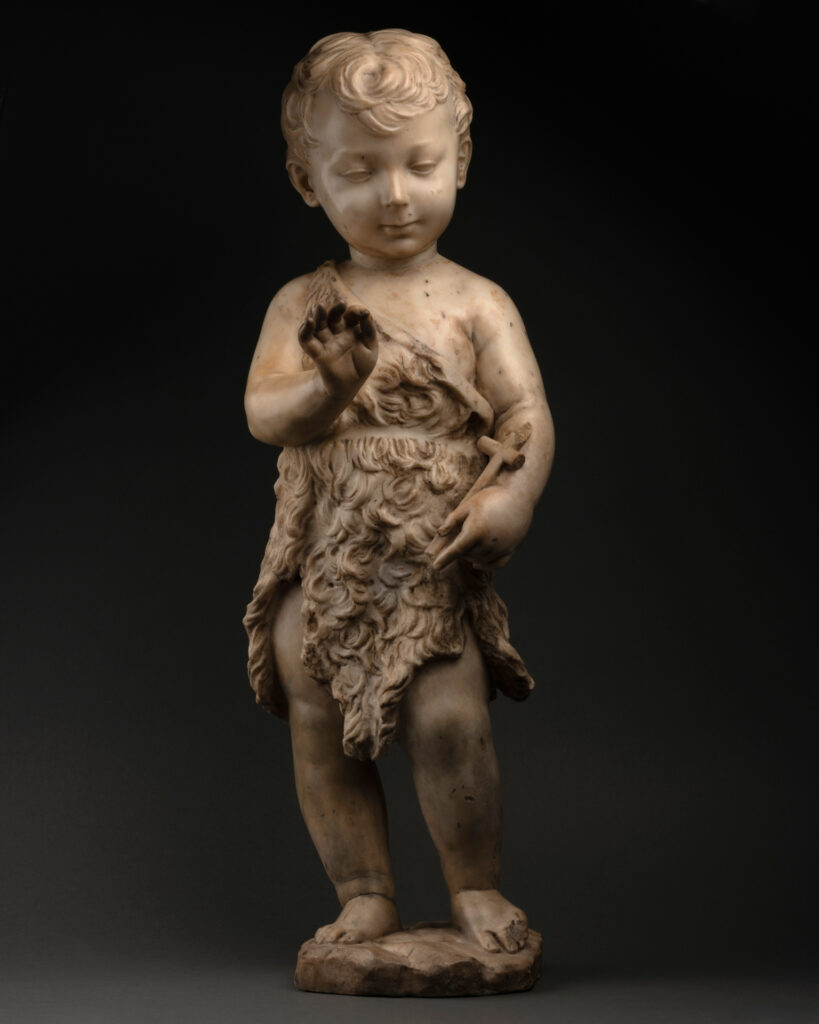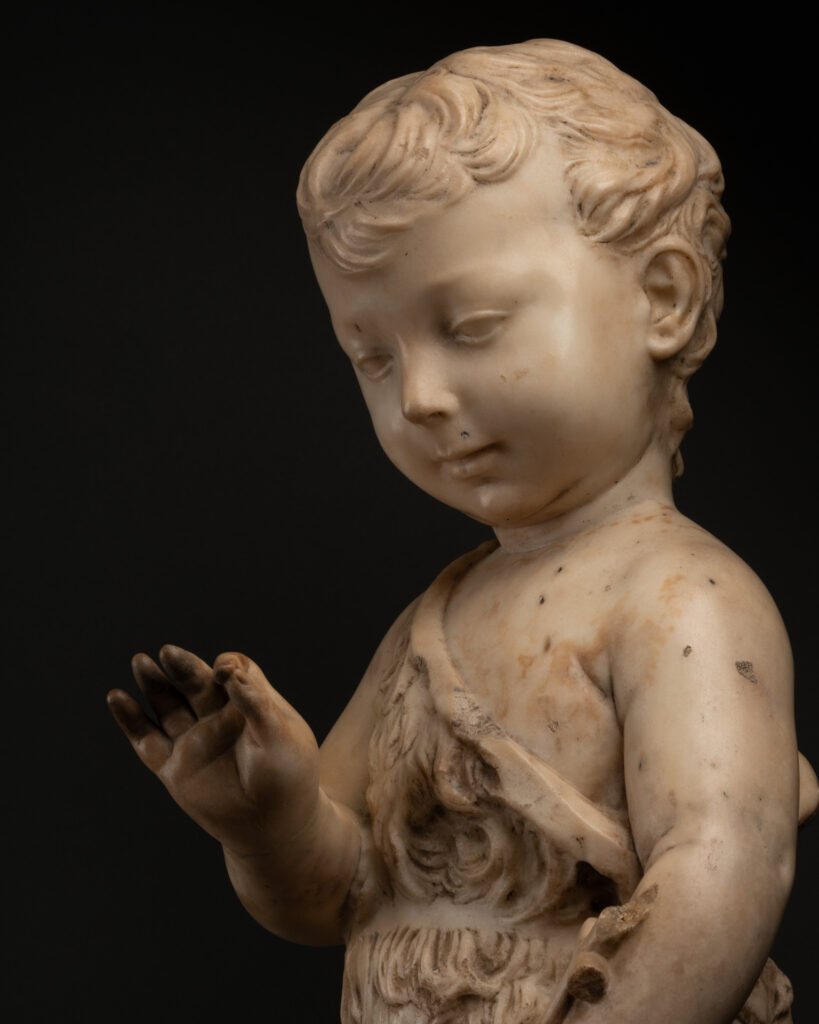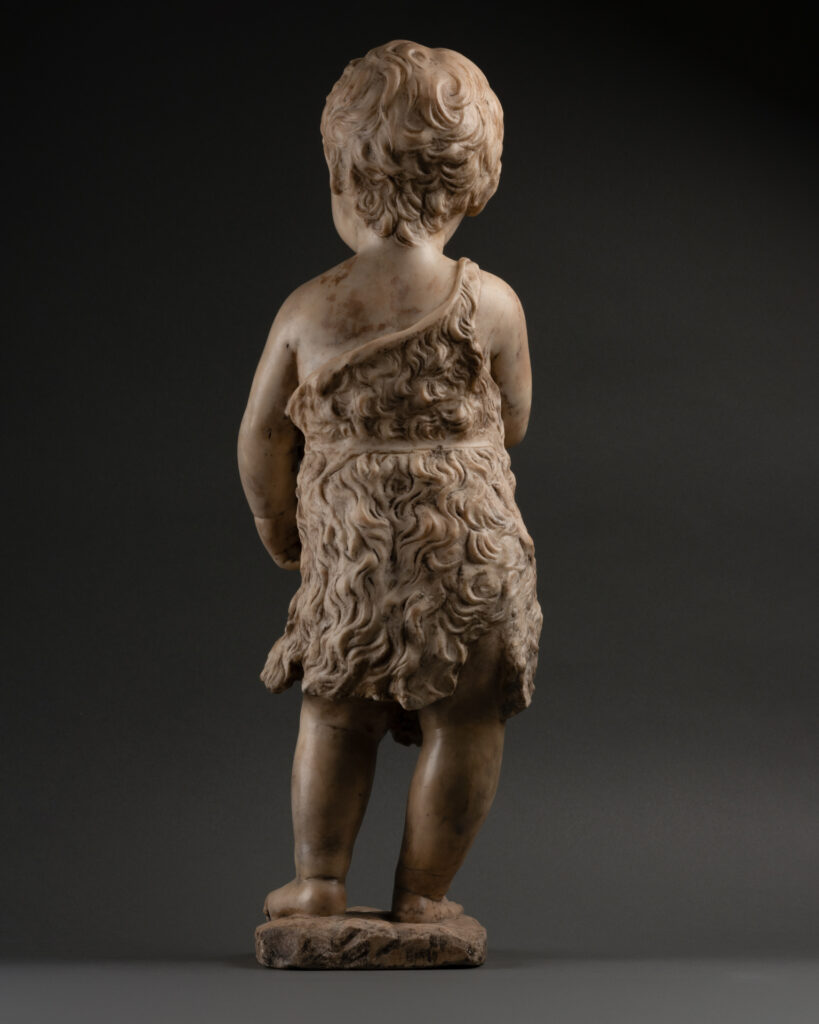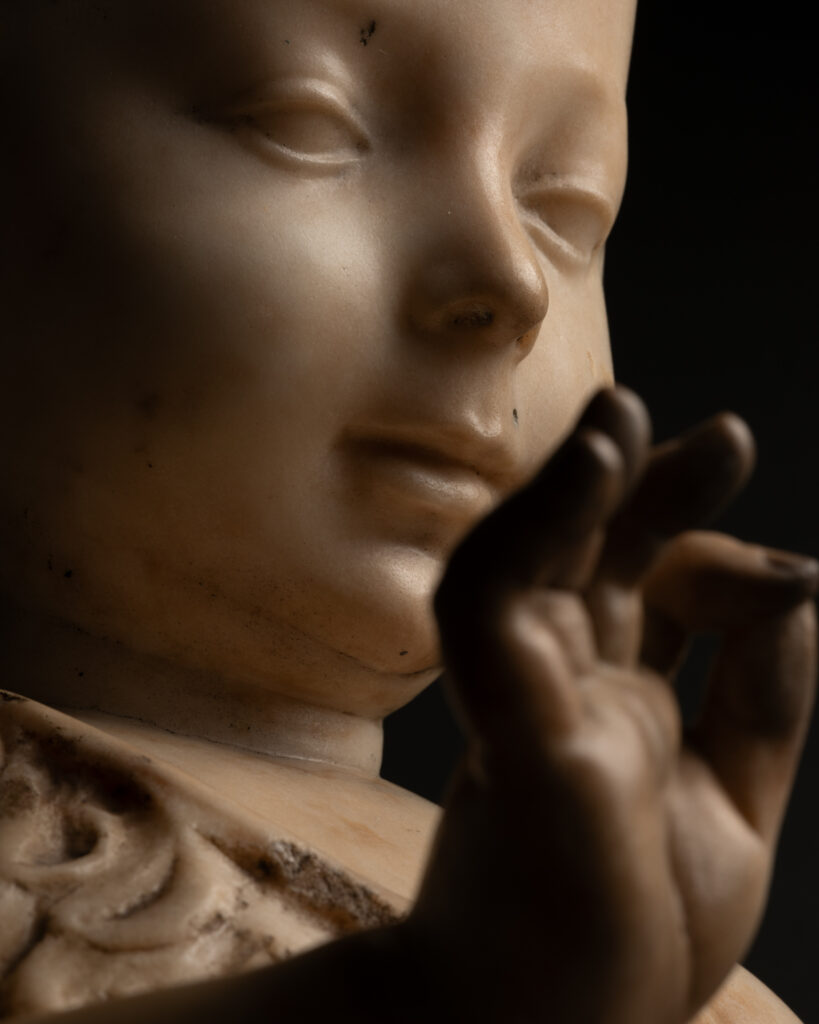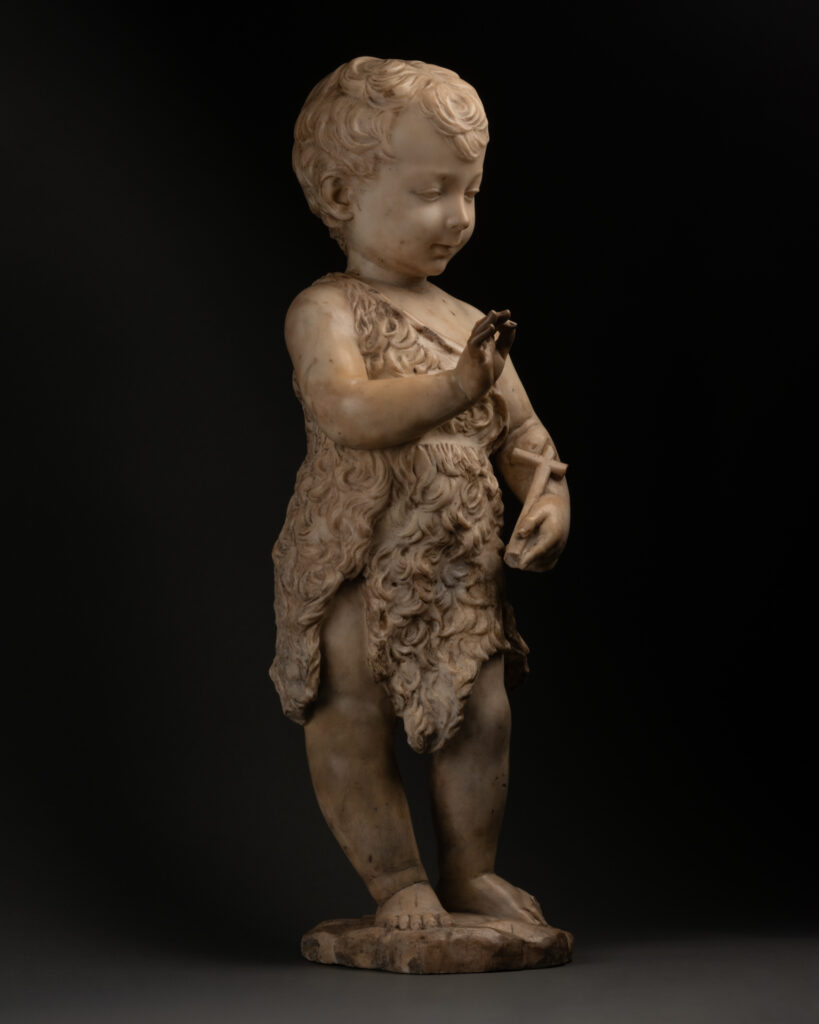Exceptional 15th-century Florentine marble statue of Saint John the Baptist as a child, attributed to Desiderio da Settignano.
The work shows a full-length child dressed in a melote, a short, furry tunic worn mainly by shepherds, and holding a cross in his hand.
The child’s face is soft. Its eyes, without pupils, are small and slender. The nose is slightly upturned and delicate, and the mouth shows an advanced upper lip, creating hollows in the full cheeks and nostrils that hint at a subtle smile. Its superciliary arches are sculpted, suggesting the presence of eyebrows. The saint’s hair is short and shaped, highlighting his ears, and the locks are tousled. His lowered gaze is due to the low orientation of his head.
The child is depicted full-figured, with chubby bare arms and legs. With his right hand, he makes a gentle gesture that could be construed as a blessing, bringing his thumb and forefinger together. In his left hand rests a crucifix. His melote, whose hairs are reminiscent of the child’s hair, is completed by a belt.
Barefoot, the saint is placed on a rock and his left leg bends slightly in a delicate contrapposto, causing him to lean his body to the right.
The treatment of this statue of the young Saint John the Baptist is characteristic of the soft style established in Italy around the 15th century.
The stil dolce, or soft style, is a style that characterizes certain works produced during the early Renaissance, drawing its inspiration from both ancient monuments and Gothic sculpture, and whose main instigator was Lorenzo Ghiberti. He often found himself in opposition to the Renaissance style introduced by Donatello.
The gentle style is expressed in sculpture by the controlled movement of figures, a certain measure of composition, a fine, light rendering of drapery, and an impression of grace and elegance in the works. The compositions then take on a rational, symmetrical organization.
Several Florentine sculptors are part of the dolce style. Les principaux sont : Luca della Robbia (1399-1482), Antonio Rossellino (1427-1479), Mino da Fiesole (1429-1484) ou encore Desiderio da Settignano (1428/1431-1464).
A true monstrance of the stil dolce, of which Desiderio da Settignano is one of the most eminent representatives, this sculpture of the saint is to be compared with his corpus.
The treatment of the marble, the softness of the face emphasized by the prominent cheekbones and the outline of a smile, the depth of the gaze, the presence of a sculpted base, the weight of the figure, the play of light caused by the orientation of the head, and finally the tender and sensitive character of the sculpture, are all clues that lead us to believe that this young Saint John the Baptist is a work by Desiderio da Settignano.
Complete file on request.
